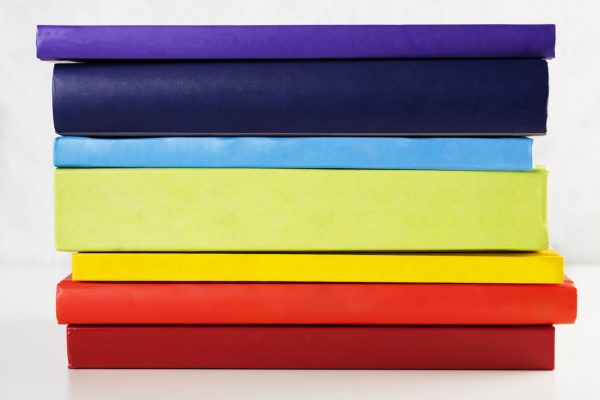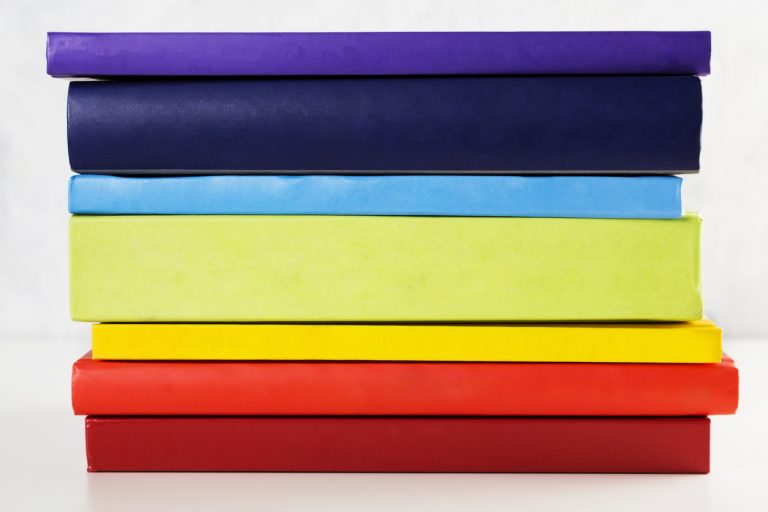Though the term is widely disputed, an artist’s book generally refers to an artwork which uses the form or function of a book. Attributed to curator Diane Vanderlip and her 1973 exhibition of the same name, the artist’s book is largely a 20th-century phenomenon, though it’s true lineage runs much deeper. From the pop-out to the cut-out, the sculptural to the radical, ArtWeb journeys through the world of this niche medium, discovering the artists who have championed it and the legacy it endures today.

Where did the artist’s book originate?
Whilst artists have played an important role in the production of books and manuscripts for centuries, most cite William Blake, the Romantic poet, painter and printmaker, as the first notable figure of the artist’s book. Songs of Innocence and Experience, published by Blake in 1794, was an illuminated lyrical anthology — written, coloured, engraved and printed by his very own hand. His desire for the full integration of text and visuals, as well as creative independence, made him a radical figure of his time, and inspired generations of book artists to come in their quest for autonomous production.
What makes an artist’s book?
Produced as one-of-a-kind art objects, or published by small presses in limited editions, artist’s books are not to be confused with illustrated books. As art historian Riva Castleman outlines, “The intention of the illustrator is to clarify the text, while the intention of the artist is to create images that extend and/or enhance the text.” In fact, an artist’s book may not incorporate text at all, as is the case in Tauba Auerbach’s rainbow books, which are themselves objects of abstract sculpture, consolidated experiences of colour. The artist’s book aims to be fully engaged with, rather than read, and to this extent, often forgoes the traditional apparatus of text, illustration, sequence, introductions and contents.
A democratic medium
The book as an art object offers radical accessibility, allowing the artwork to be viewed by multiple people at different times, in different locations. The more copies made, the wider the work can be distributed. This potential to reach large audiences is what attracted the avant-garde artists of the early 1900s. With World War I on the horizon, printed matter was a means of disseminating ideas outside of commercial or institutional interest, a way to connect with a public beyond the usual art crowd.
Small in scale, these books cost relatively little to produce, replicate and distribute, making them powerful social and political tools. Their radical nature was seized upon by movements like Italian and Russian Futurism, Dada and surrealism, from which came books like Filippo Marinetti’s Zang Tumb Tumb and Max Ernst’s Une Semaine de Bonté. Amongst the activism of the 60s and 70s, the rebellious nature of the artist’s book was revived once more, with artists like Lawrence Weiner and Sol LeWitt using their bookworks as ‘alternative spaces’ to display their art.
Dieter Roth and Ed Ruscha
In the 50s and 60s, two figures in particular came to define the modern artist’s book: Dieter Roth and Ed Ruscha. For Roth, it was the deconstruction of the book’s formal qualities that intrigued him. In works like 2 Bilderbücher, he disrupted sequence by cutting holes into each page, allowing glimpses of the patterns beneath. Later, he began appropriating other publications. Daily Mirror is a one-of-a-kind miniature book made from trimmed down pages of newspapers. These out-of-context snippets of images, words, and advertisements created a cacophony of visual noise, divorced from their original meanings.
Ruscha, by contrast, produced a series of bookworks, each with a wide distribution, in a deliberate attempt to expand his audience. In 1962, he published the first edition of Twentysix Gasoline Stations, his first artist’s book, which contained 26 photos of different petrol stations along Route 66. Though his books were more traditional, Ruscha insisted his books were artworks in their own right, not simply a means for the reproduction of existing photographs.
Unconventional materials
Book artists are constantly challenging the idea, content and structure of the traditional book. They have sliced them up, stitched them back together, incorporated strange objects and experimented with a host of unconventional materials.
In 2004, for example, Louise Bourgeois created Ode à l’Oubli, a fabric artist’s book made from old clothes and monogrammed hand towels from her wedding.
The aforementioned Dieter Roth, too, was known for regularly using perishable food such as meat and cheese in his bookworks.
Then, there are artists like Guy Laramée who transcends the book form altogether, as he transforms outdated encyclopedias and dictionaries into stunning 3D landscapes.
Artist’s books today
Despite the rise of the digital, or maybe even in spite of it, the world of artist’s books is on the rise. With established contemporary artists like Lawrence Weiner and Richard Tuttle upholding the medium, and a host of emerging artists following suit, the book form continues to evolve. Whilst organisations like Printed Matter dedicate themselves to the dissemination and appreciation of the format, artist’s book fairs are cropping up internationally to meet the growing appetite for the medium amongst collectors, art and book lovers alike. In an increasingly virtual world, perhaps it is the very tactility of these objects that continues to capture our interest.






